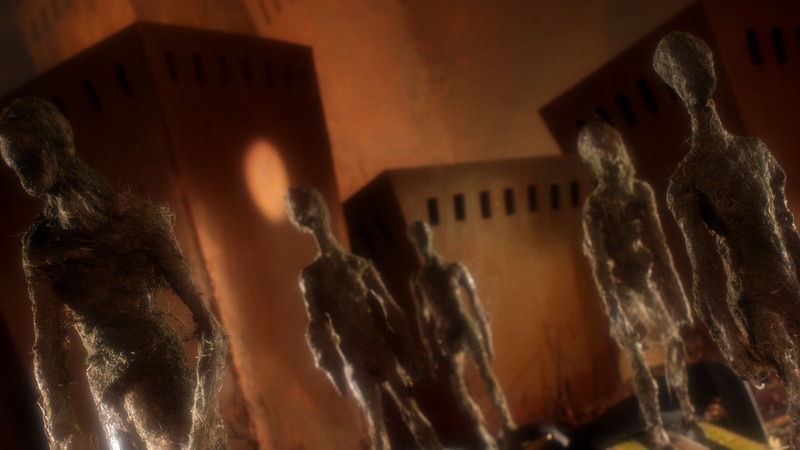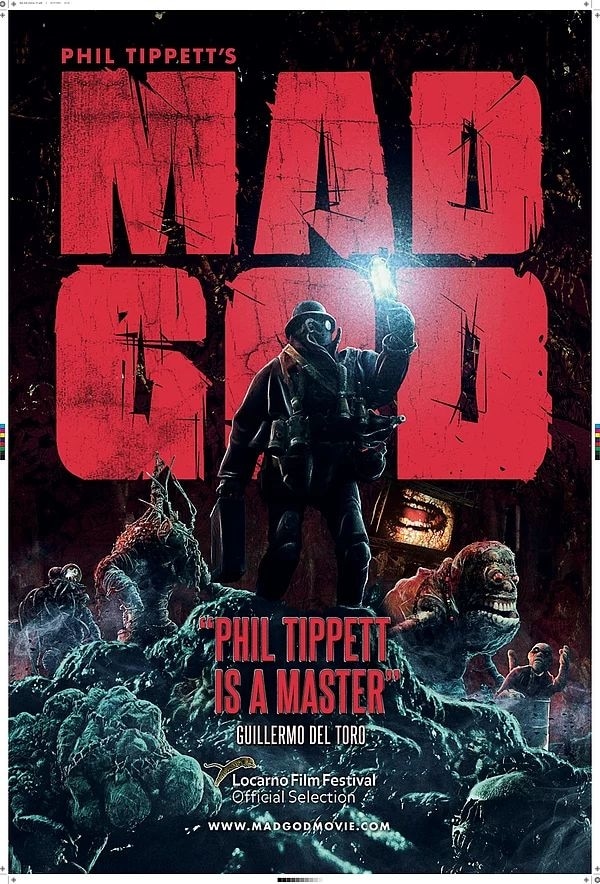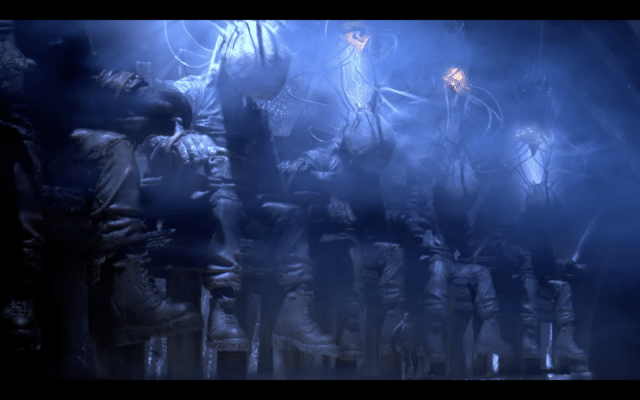
Don’t let the 2021 release date for Mad God fool you; this is a film which has been an incredible thirty years in the making. The reasons for the long hiatus between conception and completion encompass a few things – as you’d expect, given that time scale – but essentially, the big shift from practical SFX to CGI around the time of Jurassic Park initially convinced creator Phil Tippett to shelve Mad God indefinitely. Phil Tippett? Name sound familiar? Well, if you’re into Star Wars…or RoboCop, or Starship Troopers, or any number of influential films from the 80s and 90s, then you know the man’s work. He’s a legendary visual effects specialist who has worked with little fanfare – bizarre, given his influence and raw bloody talent.
Mad God was first planned out in the late 80s, and then resurrected in the Noughties when Kickstarter did its thing and saw the film through to completion. It’s the project which very, very nearly wasn’t, and so we owe a big debt of gratitude to the Kickstarter backers who moved things on – urging Tippett that it needed to be done, too. The resulting film is absolutely astonishing. Having experienced the completed film on the big screen, it’s difficult to think of a better example of stop-motion animation out there, particularly if your tastes lean towards the nightmarish and bleak. You could freeze-frame Mad God at any given second and spend an hour poring over the fine details; it is an incredible work of art.

Whilst the film is far more than just an array of disturbing images, the narrative is minimal; Mad God has no dialogue whatsoever, and save for a handful of live-action segments is entirely animated. It begins with an armour-wearing figure in a diving bell being dropped down to the surface of a dystopian world – if Earth, then post-apocalyptic in the extreme, with almost no remnants of normal life. The figure emerges and begins to traverse this hellscape, somehow swerving the disaster unfolding around him as he follows some kind of map – a map which is steadily disintegrating every time he tries to read it. As he travels, he observes all sorts of horrors. One of the many things which the film excels at is in its manipulation of scale, which only adds to the disorientating atmosphere. In one second, the traveller is looming over (and usually, stepping on) tiny figures he encounters; in the next frame, he is peering up at gigantic beings, or striding through broken figures in a lapidarium. Another excellent source of disorientation stems from the nature of the landscape; it’s never quite clear whether the traveller is above ground or underground, below water or in a different kind of existence altogether. Cumulatively, it’s quite something. It’s also fascinating where the film breaks off and shows us different characters going about their business in this place, before veering away from them again. Each of these is superb in its own right.
Later, this narrative arc disintegrates too and seems to loop, after our traveller is taken and opened up surgically for a grisly little interlude of birth and sacrifice. We also see a human male sending a traveller (the same? Different?) into the void with a map, necessitating another dangerous journey. Despite this narrative shift, there are themes to follow here: the world is clearly at war, it’s wracked with grotesque industry, and the sequences where the faceless workers are picked off by the machines they seem to serve are amongst the darkest of the lot (and dare I say, a bit of black humour as well). In some respects the film looks like it was conceived in the 80s and worked on in the 90s, as there are visual resemblances here to the likes of H R Giger, 2000 AD and Fred Stuhr/Adam Jones’ stop-motion work for the band Tool in the early 90s, but hey: absolutely no complaints. This is just the sort of biomechanical dystopia I want to feast my eyes on. For many viewers of a certain vintage, this will feel like coming home.
There’s not a moment’s cop out here. Mad God is unsettling, innovative and intricate, with not a square centimetre of frame wasted. Seeing it has been a fantastic experience, and given its long journey to completion, it feels significant too. Everything in this gloomy, desolate, stark universe is worthwhile and staggering in the extreme to take in. Nothing comes close to it and I can’t wait to see it again, existential angst notwithstanding.
Mad God (2021) screened as part of the Celluloid Screams film festival in Sheffield, UK.
